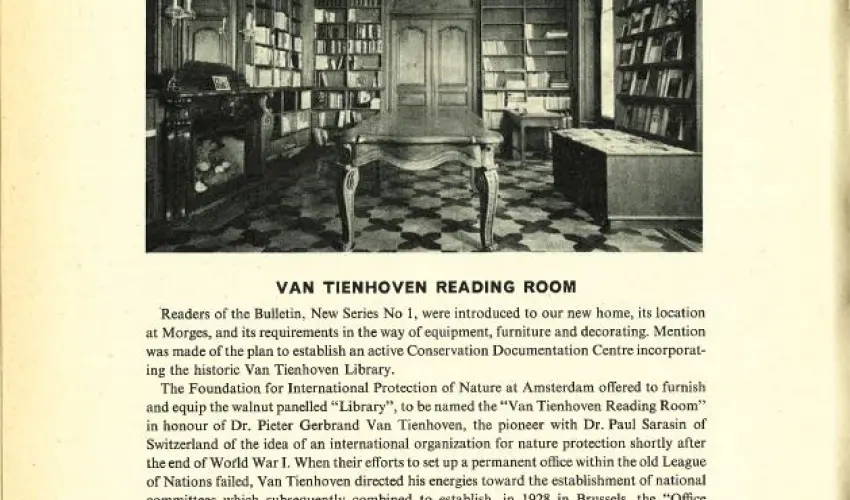When IUCN was founded in Fontainebleau on 5 October 1948 as the International Union for the Protection of Nature (IUPN), one of its original objectives was to “collect, analyse, interpret and disseminate information about the ‘Protection of Nature”’. Because the International Office for the Protection of Nature (IOPN), one of its founding international organisational members located nearby in Brussels, already had a valuable library collection, IUPN regarded it as essential in carrying out this objective.
The IOPN dated back to 1928, when a motion was read and approved at the General Assembly of the International Union of Biological Sciences by the National Committees of Belgium, France, and Holland, who "declared themselves in favour of an ultimate International Union, but limiting themselves at first to the creation of a Central Bureau of Information and Correlation." All organisations dedicated to the protection of nature were urged to send publications and information to the newly established office to facilitate the later establishment of an international union for the protection of nature i.e. IUCN.
When IOPN merged with IUPN in 1955, the resulting Van Tienhoven Library (named after Dr. P.G. van Tienhoven, founder of IOPN and whose portrait hangs in the IUCN HQ Library today) inherited the collection of the Office and continued its legacy of collecting, preserving, and disseminating the world’s accumulated knowledge on nature conservation.
Today, the IUCN HQ Library still holds in its collection the material inherited from the IOPN. However, despite its nearly 100-year legacy and critical role in the establishment of a global environmental movement, much of this historical heritage is under threat due to chronic lack of resources to properly care for these materials and make them accessible to researchers.

